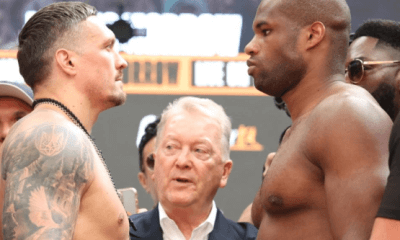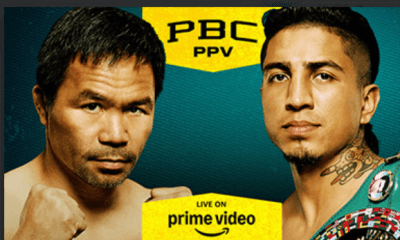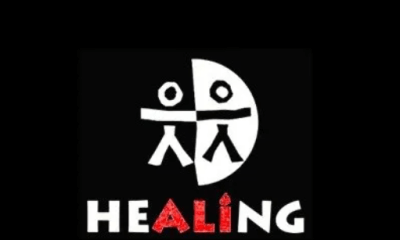Featured Articles
Archie Moore’s Toledo Phase

Archie Moore’s Toledo Phase
The most attractive boxing card on this weekend’s docket is being staged in Toledo, Ohio. Jared Anderson and Arslanbek Makhmudov, fast-rising heavyweight contenders with eye-popping knockout ratios, meet credible opponents in the featured bouts. ESPN will televise the Top Rank promotion.
The show will inevitably spawn references to the first big heavyweight fight in Toledo, the July 4, 1919 clash between Jack Dempsey and Jess Willard, the fountainhead of America’s Golden Era of Sports. From the standpoint of historic importance, no other boxing event in Toledo has ever come close to matching it, but the city on the shores of Maumee Bay has served as the stomping ground for some colorful boxers including Archie Moore, the man widely considered the greatest of all the light heavyweight title-holders.
Moore’s Toledo phase hasn’t received much attention. That’s understandable as there were so many phases to his remarkable 28-year career.
In a 1954 story for Sports Illustrated, Budd Schulberg found the perfect metaphor. He likened Moore to a tumbleweed.
Indeed, perhaps no other boxer in history drifted across more of the planet. Moore’s peregrinations took him to 25 U.S. states plus the District of Columbia, and 12 foreign countries spread across four continents!
It seems fitting that Archie’s final ring engagement came against a professional wrestler, Iron Mike DiBiase. Back in those days, long before cable television and flat screen TVs, there were more than a dozen influential wrestling promoters in America, each controlling a specific regional territory. Pro wrestlers hunkered down for a spell when they went to a new city. Eventually the local mat fans would tire of them and off they would go to a new territory. The female counterparts of the pro wrestlers were the bump-and-grind dancers that worked the burlesque circuit.
Archie Moore had much in common with those wrestlers. Early in his career, he had eight fights within a five-month span in San Diego. This was his first of several San Diego phases. The city eventually became his adopted home. St. Louis, where he spent his boyhood, and Baltimore also factored large in his “Mongoose” days before the prefix “Old” was attached to it. He bunched multiple fights inside tight windows in both places.
One of Moore’s more interesting phases began in March of 1940. From his base in Sydney, he had seven fights in Australian rings over the next four months, each scheduled for 12 rounds. He would have another foreign phase in 1951. From his base in Buenos Aires, he had eight fights in nine weeks, seven in Argentina and the other in neighboring Uruguay.
Before leaving for South America, Moore had eight fights in Toledo, the first six in 1949.
These were his opponents, listed chronologically:
Jan. 10, 1949 – Alabama Kid – An old warhorse who had been around since 1928, the Alabama Kid was born Clarence Reeves in Georgia. Moore knocked him out in the fourth round. They would fight again later that year in Columbus, Ohio, where the “Kid” then hung his hat and the result would be virtually identical (Moore KO 3).
Jan. 31, 1949 – Bob Satterfield – A fighter who would be remembered as a knockout artist with a glass jaw, Satterfield was credited with having knocked out 28 of his 35 opponents in pre-fight reports. Moore knocked him down four times before the fight was stopped in the third round.
April 11, 1949 – Jimmy Bivins – This was the fourth meeting of what would be a five-fight series. A future Hall of Famer whose best days were behind him, Bivins brutalized Moore in their first encounter in 1945, but Archie won the rest, stopping Bivins in the eighth round on this occasion. Unlike most of Moore’s previous fights, this one achieved good national coverage. The Associated Press had a reporter and a photographer in attendance.
Oct. 4, 1949 – Bob Amos – A Detroiter whose once promising career was on the skids, Amos had gone 10 rounds with Moore in Washington DC the previous year, losing a wide decision. This fight was something of a carbon. “Most of the ringsiders were under the impression that Archie could have put Amos to sleep just about anytime he wanted,” said a story in the Toledo Union Journal. Moore may have been saving himself for Phil Muscato. That fight, already signed, was only 20 days away.
Oct. 24, 1949 – Phil Muscato – Hailing from Buffalo where he had developed a strong following, Muscato owned two wins over Lee Savold, a future heavyweight title claimant, and two wins over Tiger Ted Lowry who would go on to fight Rocky Marciano twice, lasting the 10-round distance on both occasions. Moore nearly had Muscato out in the fourth frame and knocked him down four times in the sixth before the match was halted.
Dec. 13. 1949 – Leonard Morrow – This would stand as Archie Moore’s most satisfying triumph until he became a world title-holder. They had met the previous year in Oakland, Morrow’s hometown, and Morrow, with only 15 fights under his belt, pulled a shocker, knocking out Archie in the opening round. That killed a match between Moore and light heavyweight title-holder Gus Lesnevich, a match that was close to being signed. The rematch, slated for 15 rounds, was all Moore from the opening bell. Morrow was taken from the ring unconscious after Archie knocked him through the ropes in the tenth round and was never the same fighter.
Jan. 31, 1950 – Bert Lytell – Moore and Lytell ran in the same circle, but only fought twice. Moore won a comfortable 10-round decision over Lytell in Baltimore in 1947. The rematch was closer but Moore prevailed.
March 13, 1951 – Abel Cestac – Moore had four intervening fights between Lytell and Cestac, including a fight in Panama. An Argentine who was recognized as the heavyweight champion of South America, Cestac outweighed Moore by 43 pounds but Archie, now in his mid-30’s, was too fast for him and won a 10-round decision. They fought again three months later in Buenos Aires and Moore stopped him in nine.
—-
Archie Moore’s Toledo phase rejuvenated his career. It came on the heels of a 1948 campaign pocked by four losses. However, the powers that be were in no mood to give the Old Mongoose a crack at the light heavyweight title. His second fight with Leonard Morrow was framed as an eliminator with the winner facing the newly crowned light heavyweight champion Joey Maxim, but Moore would have 25 more fights before he caught up with Maxim with whom he then shared the same manager in Doc Kearns (a story for another day).
During his light heavyweight title reign, which lasted nine years, Moore made frequent forays into the heavyweight division including title fights with Rocky Marciano and Floyd Patterson. After years of fighting for small purses – “moving around money” in the words of the great sportswriter Jimmy Cannon – Archie finally got to swim with the big fish.
Arne K. Lang’s third boxing book, titled “George Dixon, Terry McGovern and the Culture of Boxing in America, 1890-1910,” rolled off the press in September of last year. Published by McFarland, the book can be ordered directly from the publisher or via Amazon.
-

 Featured Articles2 weeks ago
Featured Articles2 weeks agoResults and Recaps from New York Where Taylor Edged Serrano Once Again
-

 Featured Articles2 weeks ago
Featured Articles2 weeks agoResults and Recaps from NYC where Hamzah Sheeraz was Spectacular
-

 Featured Articles2 weeks ago
Featured Articles2 weeks agoFrom a Sympathetic Figure to a Pariah: The Travails of Julio Cesar Chavez Jr
-

 Featured Articles2 weeks ago
Featured Articles2 weeks agoPhiladelphia Welterweight Gil Turner, a Phenom, Now Rests in an Unmarked Grave
-

 Featured Articles3 weeks ago
Featured Articles3 weeks agoCatterall vs Eubank Ends Prematurely; Catterall Wins a Technical Decision
-

 Featured Articles4 days ago
Featured Articles4 days agoManny Pacquiao and Mario Barrios Fight to a Draw; Fundora stops Tim Tszyu
-
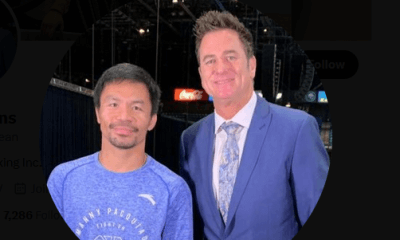
 Featured Articles1 week ago
Featured Articles1 week agoFrom the Boondocks to the Big Time, The Wild Saga of Manny Pacquiao’s Sidekick Sean Gibbons
-
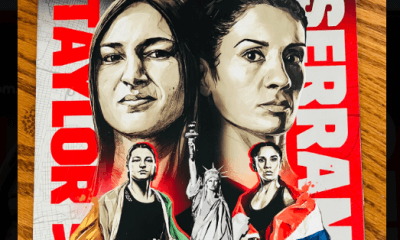
 Featured Articles2 weeks ago
Featured Articles2 weeks agoAvila Perspective, Chap. 334: Back-to-Back Boxing Cards in the Big Apple






